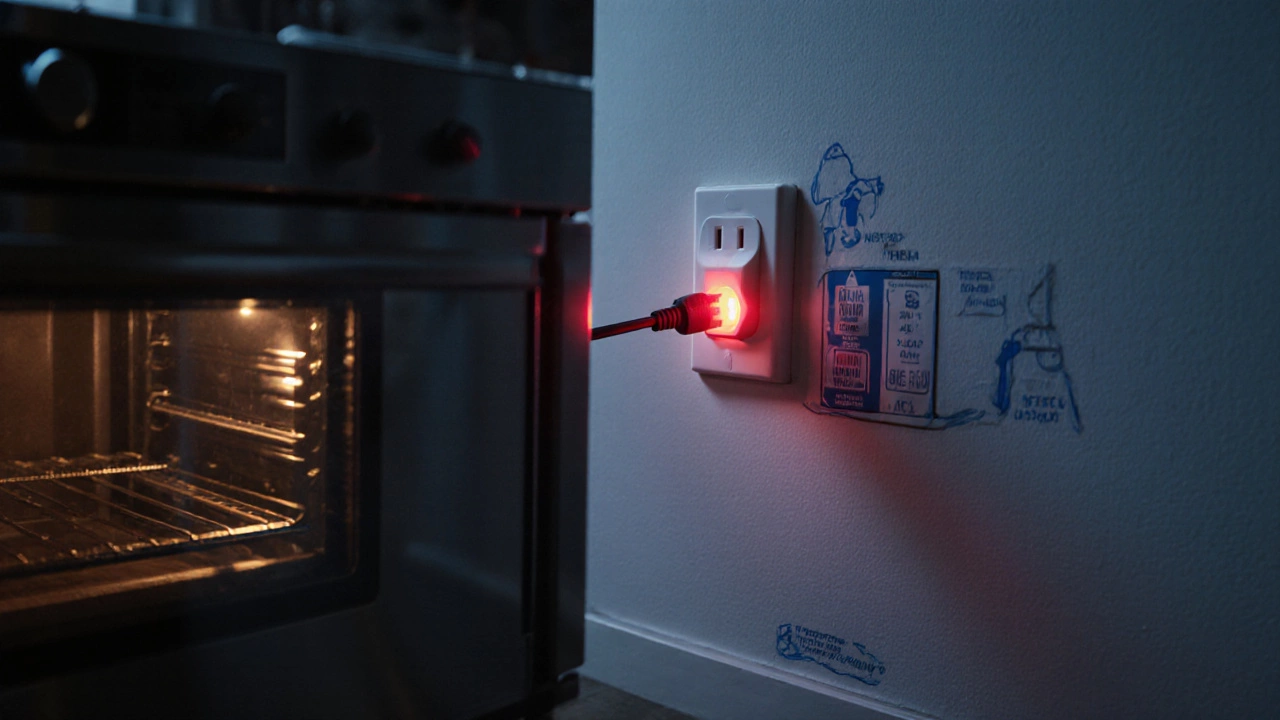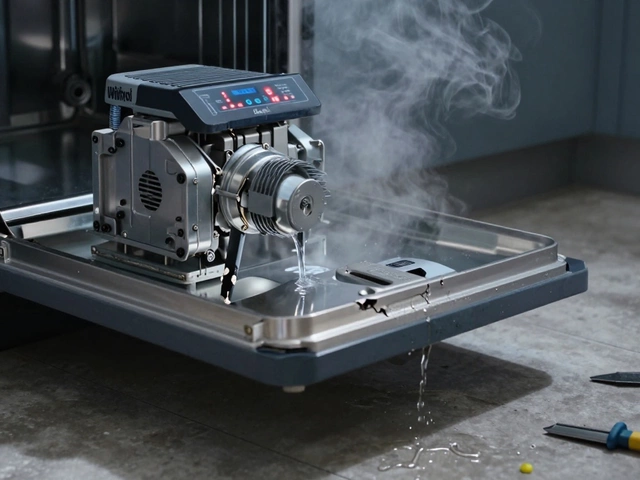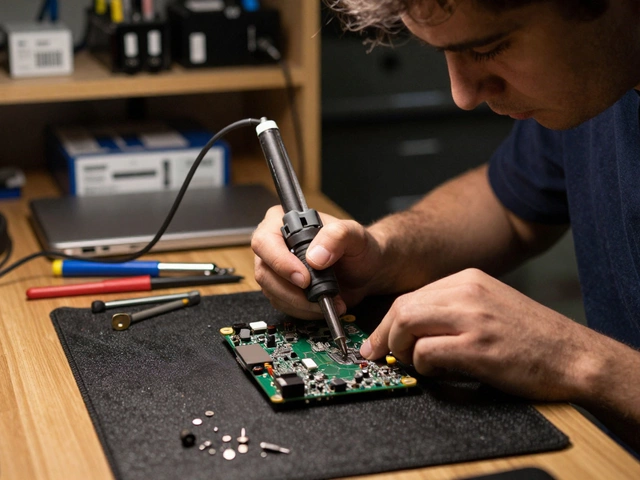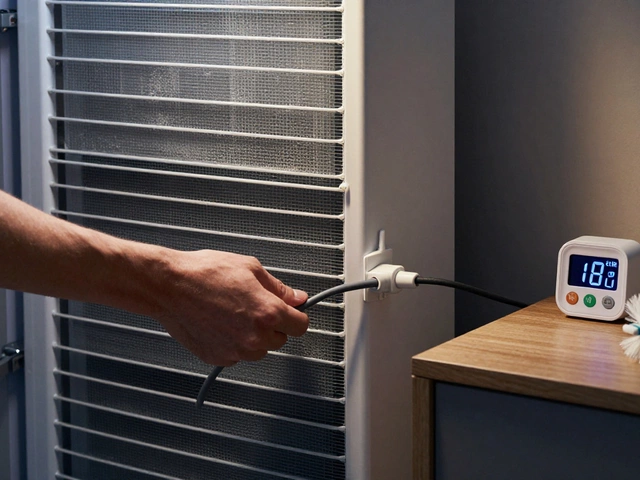Electric Oven Circuit Checker
Oven Compatibility Calculator
Check if your home's electrical system can safely support your new electric oven before purchasing or installing. This tool helps you verify voltage, amperage, and wiring compatibility.
Compatibility Results
Plugging in a new electric oven might seem like the easiest part of the whole process-just roll it into place, find the outlet, and push the plug in. But if you’ve ever tried that and gotten nothing but silence from your oven, you know it’s not that simple. Electric ovens don’t work like your toaster or coffee maker. They need serious power, and if your home isn’t ready for them, plugging them in won’t just fail-it could be dangerous.
Most electric ovens don’t plug into regular outlets
Regular wall outlets in most homes are 120 volts and handle 15 or 20 amps. That’s fine for small appliances. But electric ovens? They typically need 240 volts and 30 to 50 amps. That’s double the voltage and up to three times the current. You won’t find a 240-volt outlet in your kitchen unless it was specifically installed for a range or oven.
If your new oven came with a plug, it’s probably a NEMA 6-50 or NEMA 14-50 connector. Those are the big, flat, three- or four-prong plugs you see on electric dryers or EV chargers. They won’t fit into a standard outlet. Even if you somehow forced it in, the circuit wouldn’t handle the load. The breaker would trip immediately, or worse, the wires could overheat.
Your home’s electrical panel must support it
Before you even unbox the oven, check your breaker box. Look for a double-pole breaker labeled something like “Oven,” “Range,” or “Cooktop.” It should be rated for 30, 40, or 50 amps. If you don’t see one, your home likely doesn’t have the dedicated circuit needed.
Older homes, especially those built before the 1980s, often only have 100-amp service. Modern electric ovens require at least 150-200 amps of total service. If your panel is full or outdated, adding a new oven might mean upgrading your entire electrical system. That’s not a DIY job. A licensed electrician needs to evaluate your panel’s capacity, check for proper grounding, and make sure the wiring from the panel to the kitchen can handle the load.
Wiring matters more than the plug
Even if you have a 240-volt outlet, the wiring behind it might be the wrong gauge. Electric ovens need 6-gauge or 8-gauge copper wire, depending on the amperage. Older homes sometimes have 10-gauge wire installed for dryers, which is insufficient for a full-size oven. Using undersized wire causes resistance, heat buildup, and fire risk.
Also, check the outlet type. Older installations might have a 3-prong outlet (two hot wires and a combined neutral/ground). Modern codes require 4-prong outlets (two hots, neutral, and separate ground). If your oven is new and the outlet is old, you can’t just swap the plug. You need to replace the outlet and rewire the circuit properly. Adapters exist, but they’re not safe for permanent oven use.

Don’t assume your kitchen is ready
Many people think if they replaced their old oven with a new one of the same brand, the wiring is fine. Not always. Ovens vary in power draw. A 5.3-cubic-foot model might pull 40 amps. A 7-cubic-foot French door oven with convection and steam might pull 50 amps. Even if the old oven worked, the new one could overload the circuit.
Check the nameplate on the back or inside the oven door. It lists the voltage, amperage, and wattage. Compare that to your circuit’s rating. If the oven’s amperage is higher than the breaker’s rating, you’re running a risk. For example, a 50-amp oven on a 40-amp breaker will trip constantly-or worse, cause a slow melt in the wires.
What if you don’t have a 240-volt outlet?
If your kitchen only has standard outlets, you can’t just install a new electric oven without electrical work. There’s no workaround. You can’t use a power strip, extension cord, or converter. Those are fire hazards and violate electrical codes.
Your only options are:
- Have a licensed electrician install a new 240-volt circuit with the right breaker and outlet.
- Switch to a gas oven (if you have gas lines).
- Buy a smaller countertop electric oven that runs on 120 volts.
Installing a 240-volt circuit usually costs between $500 and $1,500, depending on your home’s layout and panel condition. It’s not cheap, but it’s far cheaper than a fire.
Why DIY is risky here
Some people try to save money by wiring the oven themselves. They watch YouTube videos, buy parts online, and think they can handle it. But electrical work on high-amperage appliances has zero room for error.
Incorrect wiring can cause:
- Breakers that trip constantly
- Overheated wires inside walls
- Short circuits that damage your oven’s control board
- Electrical fires that start behind the wall
Insurance companies often deny claims if they find unpermitted electrical work. And if an inspector finds it during a home sale, you’ll have to fix it before closing-sometimes at your own cost.

What to do before buying a new oven
Don’t buy an electric oven until you’ve checked these things:
- Look at your breaker box. Is there a 240-volt double-pole breaker labeled for an oven?
- Check the amperage rating on that breaker (30, 40, or 50 amps).
- Find the outlet. Is it a 4-prong NEMA 14-50? Is it in the right spot?
- Read the oven’s nameplate specs. Does its amperage match or stay under the breaker’s rating?
- If anything is missing or mismatched, call an electrician before you buy.
This step alone saves people thousands in returns, delays, and emergency repairs. A $100 electrician visit before you buy beats a $2,000 oven sitting in your garage because you can’t plug it in.
What if your oven won’t turn on after plugging it in?
Even if you have the right outlet and breaker, the oven might still not work. Here’s what to check:
- Is the circuit breaker flipped? Sometimes it looks like it’s on, but it’s tripped halfway. Turn it all the way off, then back on.
- Is the oven’s internal fuse blown? Some models have a thermal fuse near the heating element. If it’s blown, the oven won’t heat-even if the display works.
- Did you turn on the oven’s power switch? Some ovens have a separate power button on the control panel.
- Is the outlet actually live? Plug in a different 240-volt device (like a space heater) to test.
If all that checks out and the oven still doesn’t work, the problem is likely internal. That’s when you call a repair technician-not an electrician. But if the outlet doesn’t have power, you need an electrician.
Bottom line: Don’t plug it in until you’ve verified the circuit
Electric ovens are powerful appliances. They’re not designed to be plugged in like a phone charger. Assuming your kitchen is ready because the old oven worked is a common-and dangerous-mistake.
The safest, smartest move? Before you buy or install a new electric oven, verify the voltage, amperage, wiring, and outlet. If you’re unsure, hire a licensed electrician. It’s not expensive compared to the cost of a fire, a ruined oven, or a failed home inspection.
Plugging in a new electric oven isn’t a quick step. It’s the final check in a long list of safety and compatibility requirements. Get it right, and your oven will last 15 years. Get it wrong, and you’ll be dealing with more than just a broken appliance.
Can I use an extension cord to plug in my electric oven?
No. Extension cords are not rated for the high current draw of electric ovens. Using one creates serious fire risk and violates electrical codes. Ovens must be plugged directly into a dedicated 240-volt outlet.
Do all electric ovens need a 240-volt outlet?
Yes. All full-size electric ovens require 240 volts to operate properly. Smaller countertop ovens run on 120 volts, but they’re not replacements for built-in ovens in terms of power or cooking capacity.
Why does my oven trip the breaker when I turn it on?
This usually means the oven is drawing more current than the circuit can handle. It could be because the breaker is too small (e.g., 30-amp breaker for a 50-amp oven), the wiring is undersized, or the oven has an internal fault. An electrician should check the circuit, and a repair technician should inspect the oven.
Can I upgrade my breaker to a higher amperage to fit a bigger oven?
Not without upgrading the wiring too. You can’t just swap a 40-amp breaker for a 50-amp one if the wires behind the wall are only rated for 40 amps. Doing so creates a hidden fire hazard. The wiring, outlet, and breaker must all match.
Is it okay to plug an electric oven into a dryer outlet?
It’s physically possible if both use a NEMA 14-50 outlet, but it’s not recommended. Dryer circuits are designed for intermittent use. Ovens run for long periods, generating more heat. The outlet and wiring may overheat. Always use a circuit dedicated to the oven.




